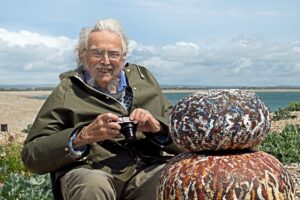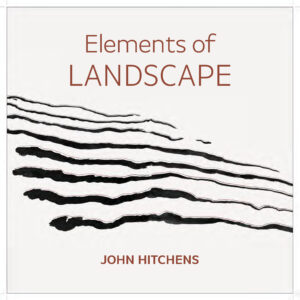Across more than a century, the Hitchens family has painted and sculpted its way into the story of British art. From Alfred Hitchens’ traditional portraits and early landscapes, Ivon Hitchens’ luminous abstracted woodland scenes, to John Hitchens’ rhythmic explorations of nature, and finally Simon Hitchens’ sculptural interpretations of form and place, each generation has redefined how we see the land around us.
Their shared fascination with the English landscape, especially the rolling countryside of Sussex, has become a thread linking four generations of artistic vision. Yet each artist interprets that landscape through their own unique vision, from brush to chisel, from surface to space, from representation to abstraction.
Alfred Hitchens (1861-1942)

Alfred Hitchens was born in Peckham Rye (now London) in 1861 and trained at the South Kensington School of Art in 1877, later studying in Paris at the Académie Julian and later, in Rome. He achieved early recognition at only 21 and his work was regularly exhibited at the Royal Academy of Arts, a testament to the Hitchens’ artistic talents.
His style is somewhat more traditional than his descendants: with a focus on portraiture and narrative canvases that captured the exact essence of the landscape around him. Although he might not be as widely known today, he laid the groundwork for what became a successive four-generation artistic family.
Ivon Hitchens (1893-1979)
Ivon Hitchens, the son of Alfred Hitchens, was born in London in 1893 and studied at St John’s Wood School of Art and the Royal Academy Schools. During the Second World War his London studio was bombed, and he moved with his family to the Sussex countryside, where he lived and worked for the remainder of his life.
Ivon is particularly celebrated for his long horizontal canvases of woodland and countryside, rendered in blocks of vibrant colour, abstract depictions of nature rather than straightforward representation of the world around him.
John Hitchens (born 1940)

John Hitchens, son of Ivon, achieved early recognition in the 1960s and 1970s, when a series of successful exhibitions led to his work being acquired by public and private collections across the UK and abroad. His early paintings often explored the landscape through pattern, rhythm, and colour, translating the natural world into compositions that balanced structure with sensitivity.
From 1990s onwards, Hitchens’ practice evolved into a new and more personal form of abstraction. He began working more closely with the land itself, using natural materials and found objects, and allowing the textures, shapes, and colours of his surroundings to guide his process. His paintings from this period are deeply rooted in the rural environment of his home in Sussex, yet they move beyond direct depiction to evoke an imagined sense of place.
Over time, his exploration of landscape became increasingly experimental. He worked on shaped and mixed-media canvases, created land art projects along the Sussex coast, and painted on stones and pieces of wood gathered from the fields around him. His imagery often reduces the forms of the land to lines, circles, and flowing patterns that capture the rhythm and structure of the natural world.
Simon Hitchens (born 1967)
Simon Hitchens, the great-grandson of Alfred, took to sculpting rather than painting. Born in 1967, he studied fine art, assisted prominent sculptors, and has created public sculptures such as Quiet Understanding, Coastline, Parallel Presence, Unity.
In his own commentary about the family exhibition “The Hitchens Family: A Shared Love of Landscape” he writes that the theme of landscape is obvious across the generations, but that the subtleties of what “landscape” means vary deeply. His work with shadows cast by rocks, durational drawings of time and geological forces takes the idea of landscape into a conceptual realm of time, form and material.
(Source: Simon Hitchens, exhibition text for “The Hitchens Family: A Shared Love of Landscape”, Southampton City Art Gallery, 2022, available at simonhitchens.com.)
Available Now: Elements of Landscape
For readers inspired by the Hitchens family and John Hitchens’ unique exploration of landscape, Elements of Landscape offers an in‑depth look at his work from 1990 onwards. This beautifully illustrated volume showcases his paintings on shaped and mixed-media canvases, land art projects along the Sussex coast, and his inventive use of natural materials. Rich with insight into his process and artistic vision, it provides a comprehensive survey of how Hitchens translates the rural environment into abstract forms, patterns, and textures. The book is available through Script Books, offering both art lovers and collectors an opportunity to explore the depth and beauty of his recent work. View Elements of Landscape here.
Credits:
John Hitchens permissions given by Anne-Katrin Purkiss

 Follow
Follow